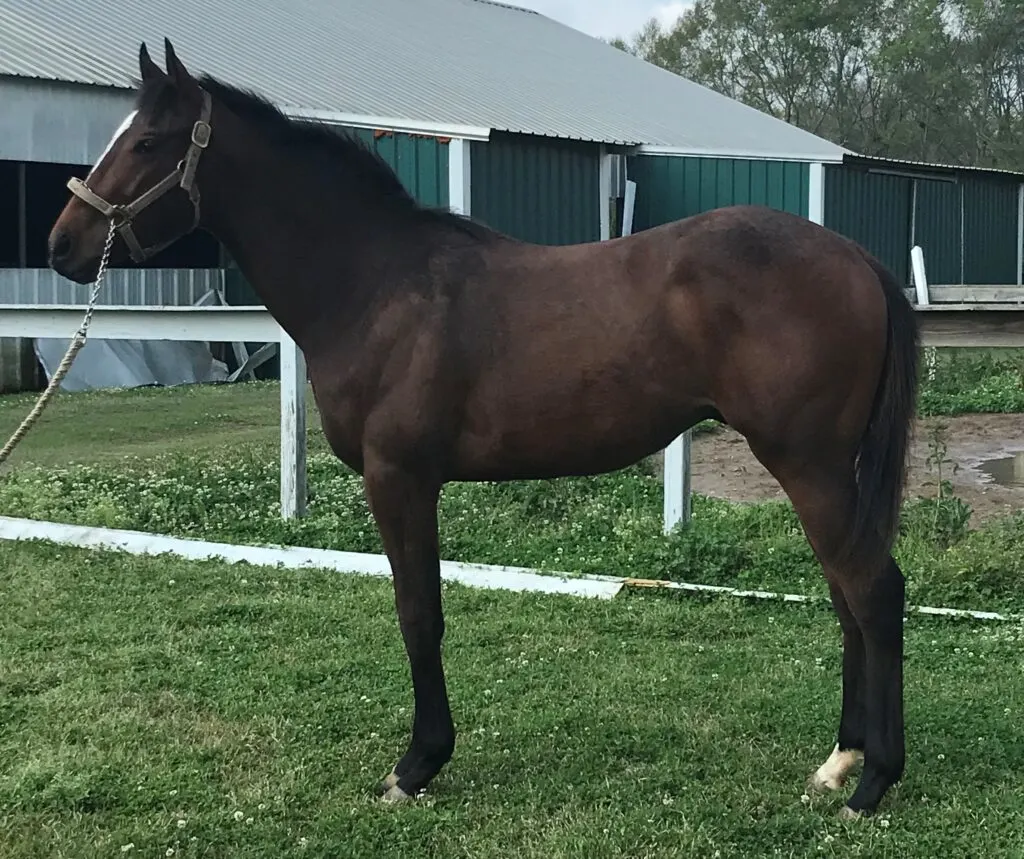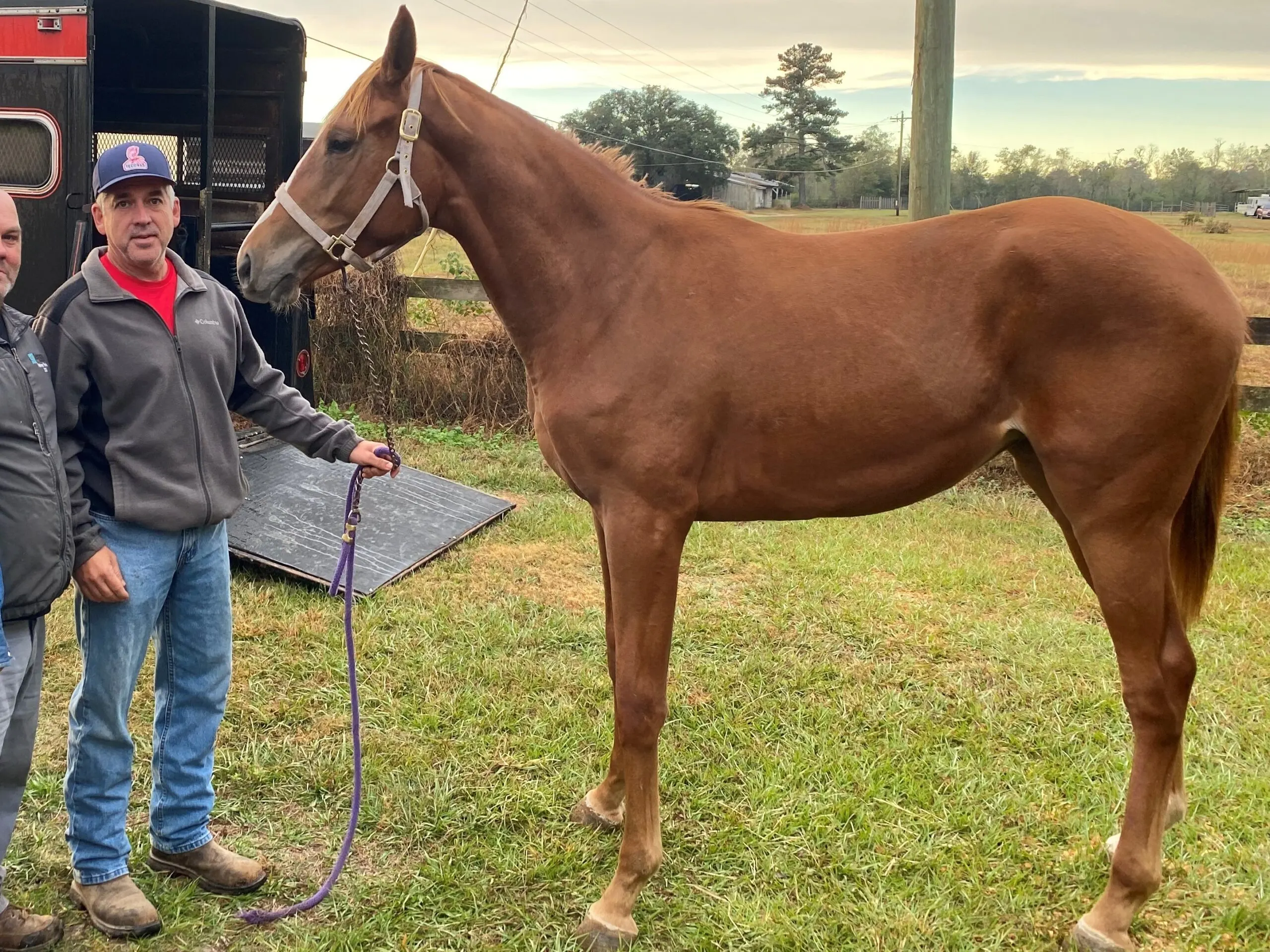Last updated: September 11, 2023
The equestrian world is one with its own language. There are plenty of terms to keep track of when it comes to riding, racing, and betting, but if you’re interested in getting involved with horses, then knowing the terminology can make the process much easier.
Basic horse riding terms are gait, canter, and trot. In racing, you need to know the differences between stakes, maiden, and claiming races, and some basic betting terms include exacta, trifecta, and superfecta. This is a small sample; there are many more terms to follow.
Learning horse terms is also essential to riding, caring for, and understanding your animal and its needs. In this article, I will be discussing basic equine terminology. If you can grasp these terms, you should feel confident joining this extraordinary world.

Horse Riding Terms.
It is essential for those new to horseback riding to learn and feel comfortable with horse terminology. Understanding the terms will help new riders expand their knowledge and enhance their enjoyment in the equestrian world.
If you’re a beginner rider, feeling somewhat confused with all the new terminology is normal. Don’t worry; you don’t need to know every word used, but it helps to know the basics.
While we could go through all the terminology, starting from a to z, I decided to provide the essential words that are a must to know.
- Saddle– the leather seat for riding put on the back of the horse.
- Balk– when a horse is not cooperating with moving or does what the rider wants it to do.
- Gait– is the speed and movement of the horse.
- Canter is the three-beat stride faster than the trot yet slower than the gallop.
- Gallop– is a fast gait containing four beats.
- English– it is a style of horse riding.
- Equestrian– an individual who takes part in competitive horse riding.
- Dismount– is when a rider gets off their horse.
- Dressage– identifies the training of horses to develop physique and ability.
- Harness– the equipment used to attach a plow or carriage to the horse.
- Reins – Thin straps of materials attached to a bit or headstall on one end and held by a rider.
- Bridle– is the equipment that is placed on the horse’s head and includes reins, bits, and a headstall.
- Bit– Typically made of metal and fits in the horse’s mouth. The reins attach to it, and riders use it to guide their horse.
- Broke-in– a horse that is trained and able to ride safely.
- Switching leads – The act of switching leads is essential in equine competitions. When a horse runs one its front legs reaches further than the other. The horses turn and switch which leg is reaching forward to stay balanced.
- Lunge line: A long, strong line used by equestrians to work horses from the ground. It’s typically 20 feet or longer and is an invaluable training tool.
The list continues, but these are the basic words that will make horse riding and training that much easier. To learn more about the tack used for riding, check out my article: Horse Tack: All the Items Horse Owners Need.

Horse Anatomy Terms.
It can be hectic to memorize your horse’s anatomy when starting as a new horse rider or owner. And while many may think that you don’t need to learn the terms to ride your horse, think again.
Learning the correct terms of your horse’s anatomy will help you become a better rider and owner. Knowing the anatomy of horses will also help you understand and improve the horse’s movements.
A critical reason why comprehending the terminology is essential is that it will allow you to pinpoint and understand the location of the injury if your horse were to get hurt.
Here are some keywords to know for your horse’s sake:
- Muzzle– refers to the horse’s head that includes the mouth, nostrils, chin, lips, and front of its nose.
- Poll– is the back of the horse’s head.
- Mane– refers to the horse’s hair which grows from the top of the neck, reaching the poll to the withers, and includes their forelock or foretop.
- Withers– refers to the ridge between a horse’s shoulder blades.
- Barrel– is the body of the horse, where the ribcage and internal organs sit.
- Hindquarters– refers to the horse’s buttocks, upper rear legs, the dock of tail, hips, and croup.
- Croup– is the top line of the horse’s hindquarters.
- Hoof– makes up the firm, horny part of the horse’s foot.
- Fetlock– Is the joint that connects a horse’s cannon bone and pastern bone. (looks like an ankle)
- Feathers– The long hair that grows on a horse’s lower legs.
- Frog– The triangle-shaped area on the bottom of a horse’s foot.
- Near fore– describes the front left leg of a horse.
- Nearside– refers to the horse’s left-hand side.
- Off fore– describes the front right leg of the horse.
- Offside– refers to the horse’s right side.

Horse Racing Terms.
If your interests include horses and races, then you’ll want to make sure to get the essential terms down so you can feel confident amongst fellow equestrian lovers such as yourself.
Like any other sport, horse racing has its language, and whether you are interested in watching the races or placing a bet, it can be a bit complicated if you don’t understand the words mentioned.
Below are some essential words that will help you comprehend the world that is horse racing.
- Allowance race– In order to be eligible for an allowance race, the horses must meet certain conditions to be eligible to participate. They are one step above claiming races.
- Also eligible or “AE”– the horses entered the field that will not race unless other horses are scratched.
- Apprentice Jockey– refers to a student jockey that receives a weight allowance of various degrees depending on their experience. Also called a bug boy or bug rider.
- Backstretch– is the straight part of the track opposite the finish line or stable area.
- Blinkers– the eye equipment that limits the horse’s vision to help the horse concentrate in the race.
- Break Maiden– is when a horse or rider wins for the first time.•
- Claiming race– is a race where each horse on the field has a price, and any individual can purchase that makes a valid claim before the race begins.
- Clubhouse turn– refers to the first turn of races, beginning on the front stretch.
- Consolation– is a payout where players without a full winning ticket still receive money.
- Derby– refers to a stakes race for three-year-old horses.
- Groom – the one who looks after the horses
- Maiden race– A race in which the horses competing have never won a race.
- Stakes race– Stakes races are the pinnacle of horse racing, where top racehorses compete. They carry more prestige and have bigger purses than any other type of competition.
- Spit the bit– A term that refers to a horse that is tired during a race and gives up.
The good thing is that these terms will become much easier as you become more involved in the world of racing. The more races you visit, the more you’ll get accustomed to hearing these terms, and soon, you’ll be confident when hearing these words in the races.
If you catch yourself forgetting what the terms mean, don’t worry. I’m sure a fellow horse racing enthusiast in the crowd will be more than happy to help you.

Horse Race Betting Terms.
Learning the horse racing betting terminology helps you not feel lost within the crowd and increases your chances of ensuring a proper bet that can lead to winning!
Whether you’re a pro at betting on horses or your love for horses has you interested in placing wagers, then learning the terminology will surely be a great way to get started.
Let’s look at some of the primary words you should learn before attempting to place your bets.
- Win– as we all know, it is a bet on a horse to win.
- Place– refers to a bet on a horse to finish in 1st or 2nd place in the race.
- Show– is a bet on a horse to finish 1st, 2nd, or 3rd in the race.
- Across the board– refers to a bet on one horse to win, place or show.
- Exacta-it’s a bet picking the 1st and 2nd place finishers in a race.
- Trifecta– refers to a bet picking the 1st, 2nd, and 3rd place finishers in the race. (My personal favorite)
- Superfecta– a bet picking the 1st, 2nd, 3rd, and 4th place finishers in the race.
- Daily Double– refers to a bet where they pick the winners of two races, typically two consecutive ones.
- Pick 3– a wager where you choose the winner of three consecutive races.
- Pick 4– a bet where you select the winner of four sequential races.
- Pick 5– refers to a bet picking the winner of five successive races.
- Pick 6– it’s a bet picking the winner of six consecutive races.
- Bridge Jumper– is a bettor who places large bets or show pools on odds-on favorites.
- Buy the race– using every horse running in a specific race in an exotic wager.
It’s normal to feel overwhelmed with the new vocabulary that entails the world of betting on horse racing so remember to be patient, and you’ll soon be confident using the terminology yourself!
More Horse Terms.
Here are some other common words people use when talking about horses.
- Foal– A foal is a baby horse
- Stallion-Male horse
- Gelding-Castrated male horse
- Mare– Female horse five years old or older
- Filly-Female horse under five years old.
- Stud– Male horse used for breeding
- Lame-A physical problem that causes a horse to have an abnormal gait
- Colic-Is a general term used to describe abdominal pain; it can be fatal
- Crib– Horses that crib typically bites on an object and suck in air.
- Green horse– A horse that has started training but not finished
FAQ:
What Is a Horse Lover Called?
The word hippophile is the most accurate word to call a horse lover because it means someone with an inordinate love for these animals. Horse lovers can also be called equestrian fans and horse enthusiasts.
What Did Cowboys Call Their Horses?
While horses seem to be the universal name for these beautiful creatures, cowboys called their
horse’s critters back in the days and used it for both cows and horses.
Meet Miles Henry
An avid equestrian and seasoned racehorse owner, Miles Henry brings his extensive experience to the equine world, proudly associating with the AQHA, The Jockey Club, and various other equine organizations. Beyond the racetrack, Miles is an accomplished author, having published various books about horses, and is a recognized authority in the field, with his work cited in multiple publications.
🔗 Connect with Miles:
Twitter
Facebook
YouTube: Check out race highlights, horse care tips, and more!

